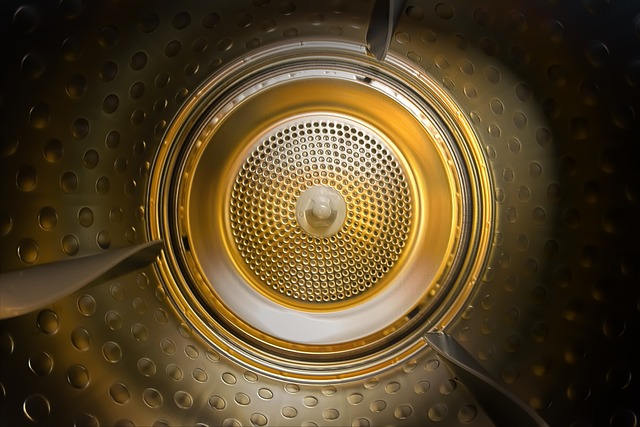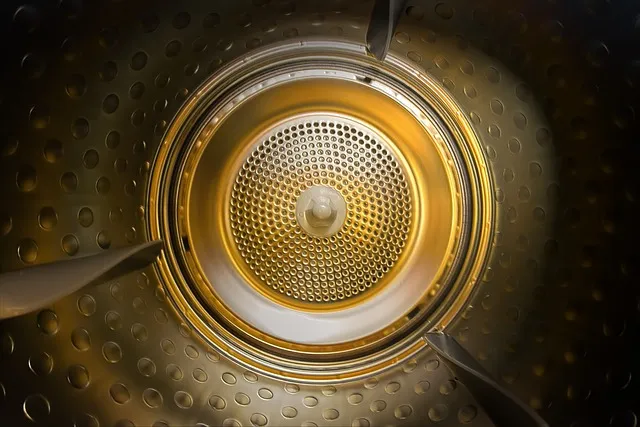How Can You Balance Drying Speed and Energy Efficiency?
First, consider the type of dryer you’re using. Modern appliances often come with settings designed to optimize both speed and efficiency. For example, heat pump dryers use a more energy-efficient method by recycling heat rather than generating it from scratch. It’s like using a slow cooker that keeps everything warm with minimal energy instead of a high-heat oven.
Another strategy is to adjust the load size. Overloading your dryer might seem like a time-saver, but it can actually slow down the process and force your dryer to use more energy to get everything dry. Think of it like trying to fit too many clothes into a small suitcase—it just doesn’t work well. On the flip side, drying smaller loads can reduce energy consumption but might require more cycles.
Also, pay attention to your dryer’s moisture sensors. Many modern dryers have these nifty sensors that detect when your clothes are dry and automatically stop the cycle, saving both time and energy. It’s like having a smart assistant who knows when dinner is perfectly cooked and shuts off the stove for you.
Lastly, ensure your dryer is clean and well-maintained. A clogged lint filter or vent can cause your dryer to work harder and consume more energy. Regular maintenance is like giving your car a tune-up to keep it running smoothly and efficiently.
Balancing drying speed with energy efficiency is all about making smart choices and adjustments. By being mindful of your dryer’s settings, load sizes, and maintenance, you can enjoy both quick results and lower energy bills.
Speed vs. Savings: Mastering the Art of Efficient Drying
Imagine drying clothes as a race against the clock, where each second counts. Fast drying methods like high-speed tumble dryers might get the job done quickly, but they often come with a hefty price tag—both in terms of energy use and wear on your fabrics. On the flip side, air drying is gentle on your clothes and kind to your wallet, but it can take ages, leaving you wondering if you’ll ever get to wear that favorite shirt again.
To hit the sweet spot between speed and savings, consider adopting hybrid approaches. For instance, partially air-dry your laundry before finishing it in the dryer. This method helps cut down on drying time and energy consumption, giving you the best of both worlds. Additionally, invest in energy-efficient appliances that might have a higher upfront cost but save you money in the long run with reduced energy usage.
In the realm of efficient drying, it’s also worth delving into the science of airflow and temperature. Proper ventilation and maintaining the right temperature can drastically cut down drying times without ramping up your energy bills. Think of it like cooking: the right temperature and techniques get your meal done quicker and tastier.
Ultimately, the art of efficient drying is about finding that balance where speed meets savings, allowing you to enjoy the benefits of both without sacrificing one for the other.
The Ultimate Guide to Balancing Fast Drying with Energy Efficiency
Let’s start with the basics. Fast drying typically means using high heat or powerful dryers, but those come with hefty energy costs. To strike a balance, consider switching to energy-efficient appliances. Modern dryers come with advanced features like moisture sensors that adjust drying time based on how wet your clothes are. This means you won’t waste energy over-drying, and your clothes will be ready to wear in no time.
Next, think about the dryer’s efficiency rating. Energy Star-rated models are designed to dry your clothes effectively while using less energy. It’s like choosing a sports car with great fuel economy—speed and efficiency in one package. Another pro tip is to clean your lint filter regularly. A clogged filter makes your dryer work harder, using more energy and taking longer to dry your clothes.
But don’t forget about the basics: use a higher spin cycle on your washing machine to remove more water before your clothes even hit the dryer. The less water in your clothes, the quicker they dry. Also, dry similar fabrics together. Mixing heavy towels with lightweight clothes means the dryer has to work harder to get everything evenly dry, which costs more energy.
And if you’re up for it, try air-drying some items. It’s the ultimate energy saver and can often keep your clothes looking fresh and new for longer. If time is tight, combining air-drying with a quick tumble dry can also be a good compromise.
Drying Dilemma: How to Achieve Quick Results Without Wasting Energy
First off, let’s talk about optimizing your dryer. Did you know that cleaning the lint filter before each load can make a big difference? A clean filter improves air circulation, helping your clothes dry faster. Also, don’t overload your dryer. Think of it like trying to dry a sponge that’s too full of water. If it’s packed tight, air can’t circulate properly, slowing down the drying process.
Next, consider using dryer balls. These little guys work like magic to keep your clothes separated and enhance airflow. They can cut drying time by up to 25%—and they’re a reusable option, which means less waste and more savings.

If you’re looking for a more eco-friendly approach, line drying is a great alternative. On a sunny day, hang your clothes outside to dry. Not only does it save energy, but sunlight can naturally brighten whites and kill bacteria. No sunshine? No problem—try an indoor drying rack placed near a heater or dehumidifier.
You can also tweak your laundry routine to save time and energy. Dry similar fabrics together; towels and jeans take longer to dry than lighter items like t-shirts. By grouping similar fabrics, you avoid wasting energy on clothes that dry at different rates.
So, the next time you face the drying dilemma, remember these tips. With a bit of tweaking, you can achieve quick results while saving energy and keeping your bills in check.
Eco-Friendly Drying: Strategies for Speed and Efficiency
First, let’s talk about harnessing the power of the sun. Solar drying, as it’s called, uses natural sunlight to dry your clothes. Just hang them on a line or rack outside, and let the sun do its magic. This method not only cuts down on energy usage but also adds a fresh, sun-kissed scent to your laundry. Plus, the UV rays help kill bacteria, leaving your clothes fresh and clean.
If outdoor drying isn’t an option, consider investing in a high-efficiency dryer. These models use less energy by optimizing heat distribution and moisture levels. Some even come with moisture sensors that stop the drying cycle when your clothes are perfectly dry, preventing unnecessary energy waste. It’s like having a personal assistant for your laundry!
Another trick is to use dryer balls. These little wonders, often made from wool or rubber, help separate your clothes in the dryer, allowing air to circulate more effectively. This reduces drying time and cuts energy consumption. Think of them as tiny cheerleaders working hard to get your laundry done faster.
And here’s a bonus tip: clean your dryer’s lint filter regularly. A clogged filter makes your dryer work harder and longer, wasting both time and energy. Keeping it clean ensures optimal performance, making your drying process quicker and more eco-friendly.
By incorporating these strategies into your routine, you can achieve a quicker, greener drying process that benefits both your wallet and the planet.
From Rapid to Responsible: Finding the Sweet Spot in Drying Technology
Rapid drying methods are like the fast lane on a highway—quick and efficient. They offer the allure of getting things done in record time, which can be tempting, especially when you’re racing against deadlines. But here’s the catch: speed often comes at a cost. The quality of the end product can sometimes suffer if not managed correctly. Think of it like baking a cake at high speed. Sure, it’s done quickly, but it might not have the same texture or flavor as one that’s baked slowly and carefully.
On the flip side, responsible drying technology is like taking the scenic route. It’s more about the journey and ensuring that every detail is attended to. This approach takes into account the preservation of quality, energy efficiency, and environmental impact. It’s like using a slow cooker for your meal—yes, it takes longer, but the result is often richer and more satisfying.
Finding the sweet spot between these two approaches is where the magic happens. It’s not about choosing one over the other but integrating the best of both worlds. Advanced drying technologies today are designed to optimize both speed and quality. They use smart controls to ensure that products dry quickly while maintaining their integrity and reducing energy consumption.

Think of it as having your cake and eating it too—getting the efficiency of rapid drying while still keeping an eye on the details that matter. So, the next time you think about drying technology, remember: it’s all about finding that perfect balance between quick results and responsible practices.
Accelerate Drying Times While Cutting Down on Energy Costs
To speed up drying times and cut down on energy costs, start by optimizing your dryer’s efficiency. Here’s a trick: clean out the lint filter before every load. It’s like giving your dryer a breath of fresh air, ensuring it runs smoothly and doesn’t waste energy. Another tip is to avoid overloading the machine. Think of it like trying to stuff too many items into a suitcase—you’re just making it harder for everything to fit properly. Drying in smaller batches allows hot air to circulate better, making your clothes dry faster.
But that’s not all. Consider using dryer balls—these little guys are game-changers. They help to separate clothes, allowing hot air to circulate more freely and speeding up the drying process. They’re like the personal trainers for your laundry, working hard to get your clothes in shape quicker.
Also, take advantage of high spin speeds in your washing machine. High spin cycles remove more water from clothes before they even hit the dryer, reducing drying time significantly. It’s like wringing out a sponge before putting it in the dryer—it’s much more efficient.
And if you’re up for a bit of a change, hang drying your clothes during warmer months can save you a lot of energy. Just imagine your clothes getting a natural, sun-powered boost. It’s free, eco-friendly, and gives you a break from the dryer’s endless hum.
By incorporating these simple strategies, you can speed up your drying times while slashing your energy bills. Your wallet and the environment will thank you!

